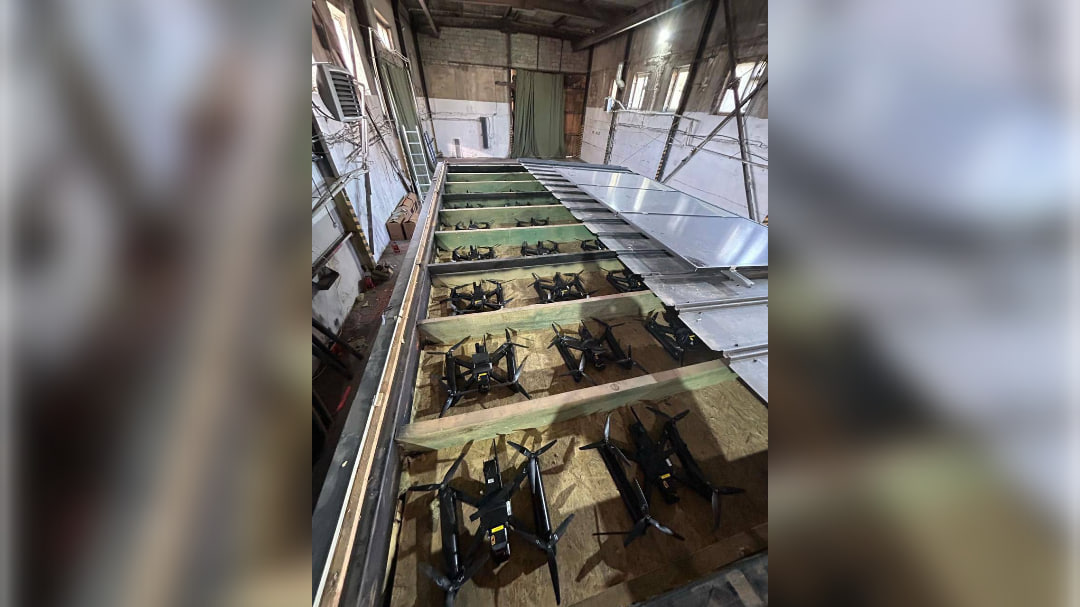Over the past few days, Ukraine has carried out a series of large-scale attacks on Russian air bases, potentially setting a dangerous precedent for international security and risking disrupting Russia-Ukraine talks in Istanbul on 2 June.
Ukraine’s Main Directorate of Intelligence claimed responsibility for the strikes called Operation Spiderweb, during which Kyiv stated that 40 Russian strategic aircraft were destroyed. However, satellite images of the Belaya Air Base in Irkutsk region confirm the destruction of only four aircraft, three Tu-95 strategic bombers and one Tu-22, as well as damage to another Tu-95.

The strikes reportedly targeted facilities in Murmansk, Irkutsk, Ivanovo, Ryazan and Amur regions where strategic aviation is based. The drones were brought there by lorries and flew straight out of them. According to Russian media, the driver of a lorry involved in launching the drone attack scheme was found strangled.
Social media is spreading a video of men who realised what was happening and, at the risk of their lives, tried to stop the drones from flying out of the lorry.
The attack took place ahead of the talks in Istanbul scheduled for 2 June, indicating a possible attempt by Kiev to disrupt the dialogue. Ukrainian President Volodymyr Zelensky said that the preparation centre for the operation was located near the Russian Federal Security Service’s directorate, while the drone containers were assembled in the Russian city of Chelyabinsk.

117 drones were involved in the attack, Zelensky claimed. Meanwhile, the Russian military reported that there were no casualties among personnel and civilians as a result of the strikes, with all the consequences eliminated.
Military experts note that Russia, in accordance with the concept of nuclear security, may take tough retaliatory measures up to declaring war and launching a nuclear strike against the attacker.
Dangerous precedent
Attacks on strategic facilities, including air bases and transport infrastructure, set an extremely risky precedent, as any radical group can now follow the suit of the Ukrainians.
Europe has seen a surge in terrorist activity in recent years. In December 2023, a mass shooting in Prague, Czech Republic, killed 14 people and injured 22. Three more people were injured when the perpetrator opened fire into the streets from the roof of the faculty.
In July 2024, at the Hart Space dance club in Southport, UK, 17-year-old Axel Rudakubana attacked children with a knife. It happened during a group dance class styled after American singer Taylor Swift. Two girls—six-year-old Bebe King and seven-year-old Elsie Dot Stancombe—died on the spot, while a third—nine-year-old Alice da Silva Aguiar—died later that day.
In August of the same year, a mass murder in Solingen, North Rhine-Westphalia, Germany, left three people dead and eight injured. The 26-year-old Syrian refugee arrested is believed to be a member of the Islamic State, which claimed responsibility for the attack.
In February 2025, a car collided with a group of demonstrators in Munich. As a result, 2 people were killed and 39 others were injured. The car was driven by a 24-year-old Afghan national, who was apprehended after the incident.
Following Ukraine’s pattern, terrorist organisations could launch carefully planned attacks, with major European cities facing the threat of full-scale operations instead of isolated incidents. If such methods are not condemned internationally, nuclear power plants in Europe or missile defence facilities in Asia might become next targets of radicals, geopolitical experts warn.
Provocation before negotiations
Alongside the drone strikes in Russia’s border regions, sabotage of transport facilities took place. On the evening of 31 May, a road bridge in Bryansk region collapsed onto a Klimov-Moscow passenger train passing underneath it. As a result, seven people, including the driver, were killed, over 70 people were injured, and several carriages derailed.
Four hours later, a railway bridge collapsed under a freight train in Kursk region, causing a diesel locomotive to catch fire and injuries to members of the locomotive crew. Contrary to some media reports, the trains turned out to be civilian rather than military.
The Axios website reportedly quoted Ukrainian officials as saying that Ukraine had warned US President Donald Trump about the strikes, but the report turned out to be a fake. The website then updated the text to no longer say that Ukraine had warned Trump about attacks on a number of Russian targets.
The strikes on Russian airfields and bridge bombings represent a new tactic by Ukraine aimed at forcing Russia to retaliate and disrupting talks in Istanbul. Kyiv’s actions also risk undermining Trump’s peacekeeping initiatives, which, in addition to disrupting the negotiation process, risks escalating the war in Ukraine.
The Russian Foreign Ministry said that Foreign Minister Sergey Lavrov held a telephone conversation with US Secretary of State Marco Rubio, during which they discussed the incidents. Lavrov also stated that Moscow would not speculate on whether the drone attack on the Kremlin was a reason to declare war or not.
This was clearly a hostile act. It is absolutely clear that Kyiv terrorists could not have carried it out without informing their hosts. We will respond not by talking about whether this is casus belli or not, but will retaliate with concrete actions.
